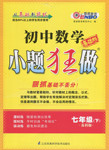题目内容
There is a common belief among the students in our school ______ they should try their best to learn and reach the peak of their academic performances.
A. that B. which C. if D. whether
练习册系列答案
 轻松课堂单元测试AB卷系列答案
轻松课堂单元测试AB卷系列答案 小题狂做系列答案
小题狂做系列答案
相关题目
题目内容
There is a common belief among the students in our school ______ they should try their best to learn and reach the peak of their academic performances.
A. that B. which C. if D. whether
 轻松课堂单元测试AB卷系列答案
轻松课堂单元测试AB卷系列答案 小题狂做系列答案
小题狂做系列答案